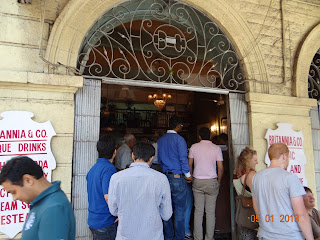The summer time spent in India during April-June, 1980 was a harrowing experience especially for the children as they were not accustomed to the heat which is quite extreme in the months of May and June. We started our return journey and on arrival in Nairobi, thought of visiting my sister Kamla and his family in Lusaka, Zambia. So, we travelled to Lusaka by Kenya Airways and had a glimpse of relaxed and tension-free life in Zambia. It was also a good extension of our holiday. While we were there in Zambia, there was a welcome proposal for us to explore an opportunity to work in that country. It was a politically stable and peaceful country under the dynamic leadership of President Kenneth Kaunda, popularly known as KK, who advocated the philosophy of "Humanism". So I appeared for an interview there in the Ministry of Health and then we moved back to Kampala, Uganda, and resumed our duties in our respective workplaces.
At the time of renewal of work permit, I was informed by the Ministry of Internal Affairs that the permit could not be renewed as I had already enjoyed the privilege of staying and working in that country for 10 years which was the maximum limit. As such, we were expected to leave the country. Meanwhile, we were being issued three monthly short-term work permits to allow us time to make arrangements to return to India. On the contrary, the Ministry of Health was not very keen for me to leave, as they were really short of manpower those days. They promised to solve this tangle at their own level and told me to hold on. The main reason why people wanted to leave the country was general insecurity and unavailability or scarcity of essential goods.
However, as we were contemplating our future course of action, I received an offer letter from Zambia. It gave us an option as well as time to plan out our strategy to exit Uganda. It was not an easy decision to make as we were so well entrenched in our work and life there. My wife Meenakshi was teaching Biochemistry at Makerere University, Uganda's most prestigious university, and I was working at Mulago Hospital, the country's biggest hospital. In fact, it was painful to end our beautiful relationship with Uganda.
One fine day I presented my resignation letter to the Ministry of Health, routed through the Medical Superintendent of Mulago Hospital, Dr Jagwe. At first, he refused to accept it and asked me to go home and discuss with my wife and reconsider or reverse our plans. We had taken the decision after careful deliberation. After a lapse of 3-4 days, I once again presented my resignation letter which he accepted with regret and forwarded to the Ministry. Similarly, Makerere University did not want to lose Meenakshi, but had to relent.
We spent our last two days in Lake Victoria Hotel, Entebbe, before taking the flight home in July, 1981. We left after spending almost 11 youthful years in Uganda doing work energetically under the most trying conditions during Idi Amin's despotic rule. At the time of departure from Uganda, we had a very strong conviction that one day we will be back here once again as we had fallen in love with the Pearl of Africa. Despite our great desire, it hasn't materialised so far.
Strangely, our daughter Neelima who went to University of California, Berkeley, on a Fellowship, got the opportunity to visit Uganda for a project on coffee and climate change through the Bill and Melinda Gates Foundation. She was only 2-plus when we left Uganda and she went there in 2010 after about 30 years. Through her, we visited Uganda once again. She sent us photographs of Makerere, Mulago, Rubaga Hospital (where our son, Rajeev, was born) Masaka, Kapchorwa, Sipi Falls, Jinja and Mbale, all those nostalgic places where we had worked. She even visited our apartment in Quarry House of the Makerere University campus where we stayed for some years.




































